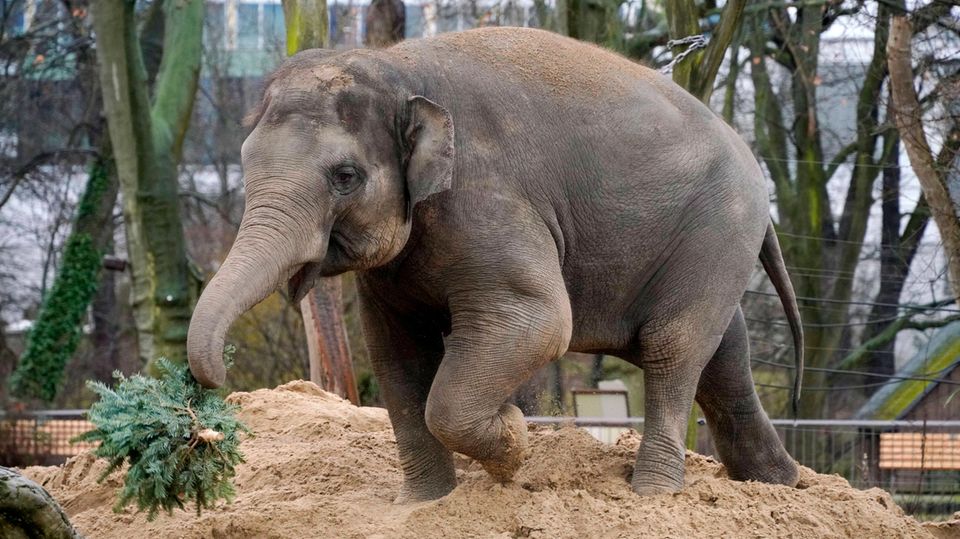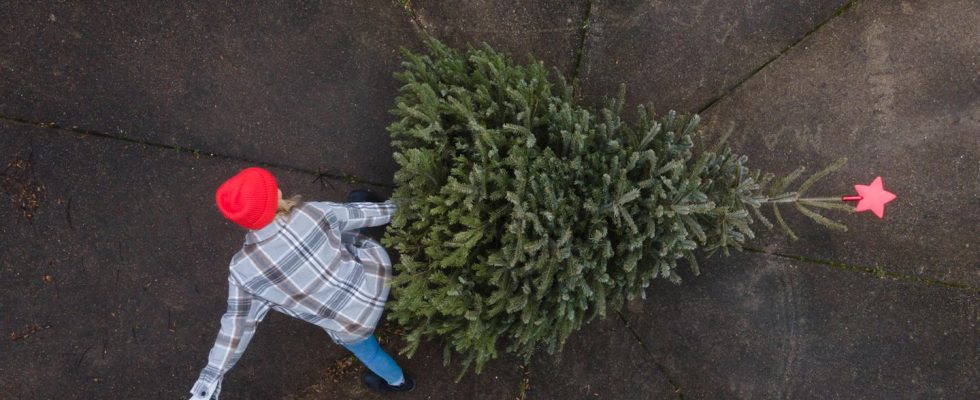Epiphany means the end of life for many Christmas trees in German living rooms. But what to do with the fir tree? And how can the trees be disposed of – or recycled – as sustainably as possible?
He is now being criticized because his purchase is not necessarily environmentally friendly: the Christmas tree. Nevertheless, many people find it difficult to do without it completely. The trees have been drying since at least Christmas, the needles slowly falling under the weight of the lovingly placed Christmas tree decorations.
For some people the item has to be taken out of the apartment straight after New Year’s Eve, for others it is difficult to part with it and leave it there until Candlemas on February 2nd. For most people, Epiphany is now over.
But what is the best way to dispose of the Christmas tree? How sustainable are alternatives like potted Christmas trees really? And can’t the branches be put to better use? An overview.
Today there is less tinsel: decorate the tree completely
First act before being thrown out: The Christmas tree must be completely stripped of its decorations. Tinsel must be removed neatly and, ideally, stored away until next year. Whatever can no longer be left belongs in the trash. Old tinsel that could still contain lead even has to go into the hazardous waste.
Throw away the tree: This is where it has to go
If the tree is to be thrown away, it must either be taken to the local recycling center or to a collection point for green waste. You can usually dispose of it there free of charge. If you have your own garden with a compost heap, you can also dispose of the Christmas tree yourself. To do this, it should be chopped cleanly. The dried branches can even help aerate the compost.
Just go back to nature? No way!
Even if the tree can be put in the compost, it doesn’t belong back into nature without being shredded. In the forest or park it takes a long time to rot. Therefore, you may even have to pay a fine if you are caught improperly disposing of the Christmas tree.
Municipal collection points and collection
Alternatively, many municipalities and cities also collect Christmas trees in the city districts. There are collection points to which the tree must be brought at certain times.
There are such storage locations in most major German cities, for example in
Sometimes the trees are even picked up directly from your front door. The best way to find out more is to visit the municipality’s websites.
Giving something back to animals and nature
Reusing the tree for flora and fauna is also a good solution. Many zoos, wildlife parks and foresters are happy about the old fir trees. They put them in their enclosures for animals to play and nibble on. Sheep, goats and alpacas can also be fed with the branches. However, you should definitely ask beforehand whether the zoo really still needs Christmas trees. Zoos often receive unsold trees from supermarkets.

An elephant feeding the Christmas tree at Berlin Zoo.
© Imago Images
In the garden, a pile of old pine branches can also provide good shelter for animals. Birds, hedgehogs or insects can hide here or even hibernate there.
Fir: Burn, eat or craft
A lot of things can be made from fir branches: teas, syrups or scented oils, for example. If you like crafting, you can carve something out of the trunk. There are many tutorials on the Internet, for example on the website “Association Natural Christmas Tree”.
Of course, the Christmas tree trunk can also be used as firewood for your own four walls. However, it is better for the trunk to dry out until next year so that too much smoke does not form when it burns down. Heating with wood is less likely to be 100% sustainable due to the fine dust pollution.
Returning a rented Christmas tree: Is that really sustainable?
Renting trees in pots has been considered a sustainable Christmas tree concept for some time. After the festival, the trees should either be returned to the dealer or replanted. The disadvantage: A double transport route is also not particularly sustainable. The concept only works if the tree is bought nearby and returned.
And then he has to survive first. To do this, he must slowly get used to the warm living room air and just as slowly again to the cold winter air. Under no circumstances should it be left in dry, warm conditions for too long and must be cared for with water.
And one more thing: If it is replanted after the frost phase in spring – it must not be dug up and reused again next year – the Christmas tree will not survive. That means: You need a new tree in the pot for next Christmas.
For next Christmas: find out in advance how sustainable your own Christmas tree is
Around 30 million Christmas trees are sold in Germany. What’s particularly bad is that the popular Nordmann fir is not a native fir, but comes from the forests of the Caucasus. In Germany, 90 percent of the trees are sold from our own country, but: They mostly come from Christmas tree crops that are properly sprayed and fertilized – against insects and for uniform growth and intensive coloring.
Horrible-beautiful
Jill Biden unveils the Christmas decorations in the White House – a look into the (cheesy) past
NABU therefore primarily recommends purchasing local spruce, pine and fir trees that grow in special areas under power lines. The best way to find out where they grow is to contact the forester or forestry office. You can often even choose and fell the trees yourself during campaigns. The short transport route also has a positive effect on the ecological balance of the trees.
Real eco-Christmas trees that have seals from FSC, Naturland or Bioland are best. A nationwide list of providers can be found at Robin Wood.
Sources: NABU, SWR, Eco test, Natural Christmas tree, Robin Wood

